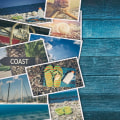Capturing motion in sports photography is an art form that takes skill and practice to master. It requires a keen eye for timing and the ability to capture the right moment at the right time. A great sports photographer must be able to anticipate the action, capture the action as it happens, and freeze it in a frame that conveys the energy and emotion of the moment. Sports photography is not just about snapping pictures of athletes in action. It's about capturing the human spirit through movement, capturing the passion and excitement of sports, and capturing moments that will be remembered forever.
It's also about capturing the beauty of the environment, the lighting, and the movement of the scene. This article will explore the techniques and tips for capturing motion in sports photography. We will cover how to find the best angles, use light and shadow effectively, and how to compose a dynamic shot. We'll also discuss how to use shutter speed to freeze action, how to choose the right lens for different sports, and how to create a story with your photos. Sports photography requires special skills and techniques to capture the excitement of a game. Use a fast shutter speed to freeze motion and avoid blurry photos.
Select the right lens for your situation, such as a telephoto lens to capture long-distance shots or a wide-angle lens to take in more of the action. Consider using burst mode to take multiple shots quickly, and use manual focus to maintain sharpness. Composition is also important when taking sports photos. Look for interesting angles, use leading lines, and focus on the action.
Look for moments of peak action that will make your photos stand out. To get the best results, pre-plan your shots by scouting locations and studying the team's player movements. Pay attention to the light conditions, and use them to your advantage when shooting. Take advantage of the weather and use it to create atmosphere in your photos. When you shoot sports photos, you need to understand the basics of camera settings.
A fast shutter speed is necessary to capture quick-moving subjects without blurring. Use a wide aperture to separate your subject from the background. If you’re using a telephoto lens, set the shutter speed to 1/500 or higher so that you can freeze the action without motion blur. For wide-angle lenses, set the shutter speed at 1/250 or higher to avoid blur.
The ISO should be set at its lowest value so that you can get the best image quality. Lens selection is also important in sports photography. To capture close-ups, use a telephoto lens with a long focal length so that you can capture far-off subjects without having to move closer. Wide-angle lenses are great for taking in more of the action and capturing panoramic shots. Zoom lenses offer versatility, allowing you to switch between wide-angle and telephoto settings quickly. Composition plays an important role in sports photography.
Look for interesting angles, use leading lines, and focus on the action. Pay attention to the background and try to find elements that can add depth and context to your images. Consider adding negative space or leading lines to draw attention to your subject. With the right camera settings, lens selection, and composition tips, you can create beautiful images that capture the energy of a sporting event. Pre-planning your shots and experimenting with different settings will help you get stunning results every time.
Lens Selection
The right lens can make a big difference in sports photography.Telephoto lenses are great for taking long-distance shots, while wide-angle lenses can capture more of the action. Use a zoom lens for flexibility, or a prime lens for maximum sharpness.
Camera Settings
In sports photography, it's important to choose the right camera settings. Use a shutter speed of at least 1/500th of a second to freeze motion and avoid blurry photos. Increasing your ISO if necessary can give you extra light sensitivity.To get the best results, use either aperture priority mode or manual mode to control your depth of field and achieve the right exposure.
Composition Tips
Composition is key when it comes to creating compelling sports photos. Aim for moments of peak action that will make your photos stand out. To get the best results, consider using leading lines, angles, and moments of peak action.Leading lines can create visual pathways that draw attention to the action, while interesting angles can add depth and perspective to the photo. When it comes to peak action, try to capture the moment when the athlete is at their most energetic and powerful. This will add a sense of dynamism and energy to the photo.
Burst Mode and Manual Focus
Using burst mode is a great way to capture multiple shots quickly and increase your chances of getting the perfect photo. Burst mode allows you to take multiple photos in quick succession, giving you a wide range of shots to choose from.This can be especially useful in sports photography, where the action may move quickly and unpredictably. Manual focus can also help you maintain sharpness when shooting at fast shutter speeds. When shooting sports, you'll want to keep your shutter speed as high as possible to freeze the action. When shooting in manual focus, you can pre-focus on an area where you expect the action to take place, so you're ready for when the action starts. This will help ensure that your photos are sharp and in focus. Sports photography is a creative and challenging endeavor that requires a combination of technical skills and an eye for great composition.
By understanding the right camera settings, lens selection, burst mode and manual focus techniques, as well as composition tips, you can capture motion and create stunning images that capture the energy of a sporting event.








